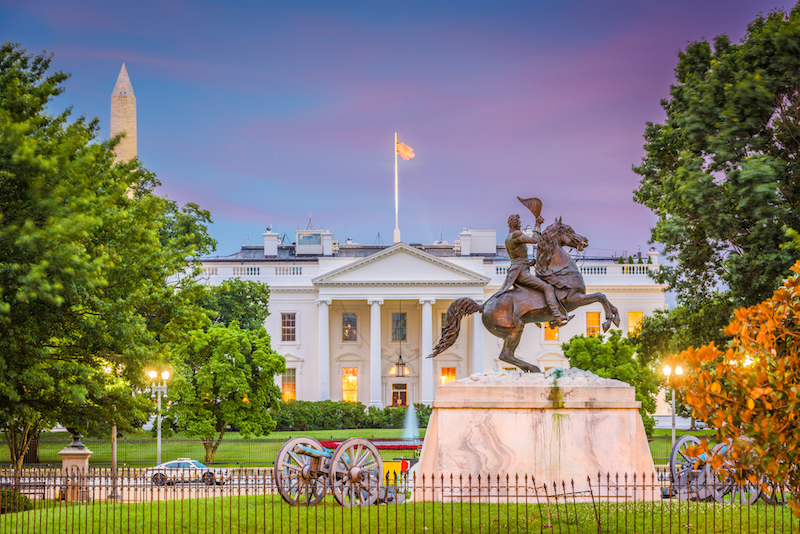
Regulatory action should be based on accurate estimates of regulatory benefits and costs.
“Excessive regulation costs our economy two trillion dollars a year. Do you believe that? Two trillion dollars a year!” Thus declared presidential candidate Donald Trump in Toledo, Ohio in September 2016, as he promised to roll back “job-killing regulations” if elected.
President Trump is making good on that pledge. With the full participation of Congress, the Trump Administration has embarked upon a radical project to freeze and roll back federal regulations that protect public health, safety, the environment, and the economy. Congress has used the Congressional Review Act to repeal 15 vital rules issued in the waning days of the Obama Administration. The Trump Administration has initiated the reversal of scores of others. In addition, lack of enforcement may be accomplishing the de facto repeal of many rules still on the books.
For Fiscal Year 2017, the Administration gave agencies a “zero budget” for new regulatory costs imposed by agencies, regardless of benefit. Fiscal Year 2018 brings a less-than-zero regulatory budget.
What, exactly, is the basis for these actions?
It turns out that the $2 trillion regulatory cost figure cited by President Trump as the basis for his regulatory reform promise also has been cited in dozens of congressional hearings and in the 2016 House Concurrent Budget Resolution that called for many of the regulatory “reforms” now being implemented or proposed. Yet the $2 trillion figure itself derives from two studies that were never published by an external source, much less peer reviewed. They were funded by organizations having a strong financial or institutional stake in the outcome of their studies. The studies completely ignore the benefits of regulations that might justify the actual costs.
Most of all, as seen below, these studies employ cost-estimation methodologies so fundamentally flawed that the resulting numbers should not even be taken seriously, much less made the basis for a major policy shift.
The first study—commissioned by the National Association of Manufacturers—was issued in 2014 by W. Mark Crain and Nicole V. Crain. It places the cost of federal regulations at $2.028 trillion, of which 71 percent, or $1.45 trillion, is attributed to so-called economic regulations—defined broadly as all “rules that govern decision-making in market transactions.” This $1.45 trillion cost estimate is not developed by adding up the cost of individual rules. Rather, it emerges from a statistical regression of per capita GDP in 34 countries that are members of the Organization for Economic Cooperation and Development (OECD) against an index drawn from an opinion poll of business executives in those countries.
Common sense should tell us there is no alchemy by which one can extract actual federal regulatory costs in the United States from a poll that asks business executives in different countries to rate the “burden of regulation” in their country on a zero-to-seven scale. It turns out that Crain and Crain resort to several statistical sleights-of-hand to generate a statistically “significant” correlation between their self-styled “Economic Regulatory Index” and per capita GDP, thus creating the illusion of a causal nexus between their self-styled index of regulatory burden and national income.
For example, by focusing on GDP, rather than on GDP growth, as their dependent variable—and by failing to control for endowment effects—they have manufactured a regression model that can make any number of factors look statistically significant and extremely costly. In fact, the World Economic Forum poll that supplied the Crain index also surveyed attitudes on 81 other variables. Using the Crains’ specious regression model, five of six variables chosen at random from this list of 81 also exhibit a statistically significant correlation with per capita GDP with huge implicit costs. By the Crains’ logic, a relative lack of “public trust in politicians” reduces GDP by $1.863 trillion per year. Shortfall of “judicial independence” in the United States costs $1.352 trillion. “Organized crime” costs $1.993 trillion. “Official favoritism” costs 1.124 trillion. And “wastefulness of government spending” costs $1.507 trillion. Together, these five variables alone yield an implied cost to U.S. GDP of just under $8 trillion per year.
These are nonsense results.
The Small Business Association has just canceled the Crains’ latest study mid-stream, citing “data limitations,” following a congressional inquiry into how and why these authors were given a new contract after searching criticism of their 2010 study by the U.S. Government Accountability Office. But caution comes belatedly. Their reports have propelled legislation and their estimate remains conventional wisdom.
The Crain studies’ impact has been enhanced by a second set of studies—an annual report by Clyde Wayne Crews of the Competitive Enterprise Institute—that uses different methods to reach a similar figure. Crews’s methodology is best described by the term “number-snatching”: lifting a regulatory cost number from a prior study without validating either its credibility or its relevance to the current environment. Many of the sources that Crews cites also follow this practice, creating a trail of cites that leads eventually to an original source—one that often proves to be decades-old and obsolete, fatally flawed, or both.
Take, for example, Crews’s $400 billion estimate for the cost of economic regulation. Crews lifts a number without analysis from a 2001 study by Mark Crain and Thomas D. Hopkins—the same Mark Crain who co-authored the first faux scholarship study described above—which lifts a number without analysis from a 1999 OECD report, which cites a 1997 OECD report, which derives its number without analysis from a 1994 report from the Council of Economic Advisers (CEA).
But that 1994 CEA report estimated the cost of the telecommunications regulatory structure in place at that time. As mentioned in the 1997 OECD report from which the figure was lifted, that system was dismantled by passage of the deregulatory Telecommunications Act of 1996. Yet the estimated cost of a long-gone regulatory structure was carried forward anachronistically to 2017 with one change: a tripling of cost applied by Crain and Hopkins to account for “transfer costs”—a practice that the Office of Management and Budget has rejected as unjustified in estimates of costs to GDP.
My audit of Crews’s numbers has unearthed many more examples of number-snatching from obsolete or invalid studies than can be listed here.
Crews’s study also makes category mistakes, such as classifying time spent preparing tax forms or waiting in security lines as a “cost to GDP,” akin to costs of environmental or occupational safety regulations. In fact, there is no probative evidence that time spent in airport security reduces GDP compared to the alternative of no airport security, or that the time spent filling out tax forms reduces GDP compared to what it would be if no one bothered to file or pay taxes. But inflating these hours and then monetizing them as losses to GDP enables Crews to pad his estimate with another $473 billion of mythical regulatory costs.
How is it that studies so fundamentally and flagrantly flawed have been cited so frequently and received so credulously in Congress? Do facts matter on Capitol Hill?
Ultimately, the Crain and Crews “studies” prove nothing at all about the cost of federal regulation. But they do reveal the existence of a highly influential echo chamber of scholars-for-hire and industry-funded centers dedicated to driving deregulation by hyping the cost of regulation and peddling bogus findings to powerful lawmakers. And they make a strong case for bipartisan pre-screening of studies used to inform legislation.
This essay is based on Professor Parker’s forthcoming paper, The Faux Scholarship Foundation of the Regulatory Rollback Movement, which will appear in Ecology Law Quarterly.




